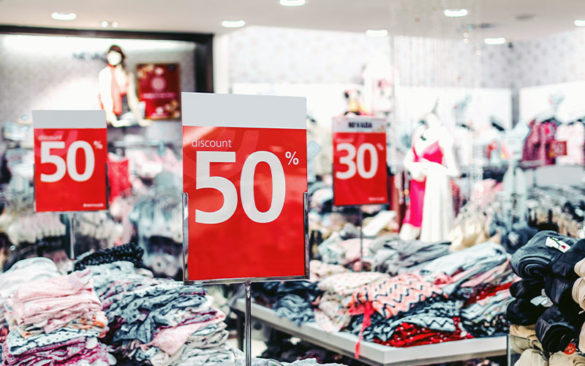The 2020 Consumer: How the Pandemic Changed Everything
It’s no secret the retail industry has undergone dramatic changes this year. Because of the pandemic, a major disruption has been the increase in customers’ buying online and picking up in-store (BOPIS) and taking advantage of contactless curbside pickup. For example, Best Buy and Target…
Grocery/Holiday Consumer Survey: 4 Trends to Keep Your Eyes on for the Remainder of 2020
With another change of season and 2021 fast approaching, 2020 presses on as a year that has redefined what it means to adapt. As the world continues to address the evolving challenges presented by the COVID-19 pandemic, here at Blue Yonder, we’re closely monitoring the…
The Future of Grocery: Enabling a Circular Supply Chain
The grocery industry is at a crossroads—either adapt and stay afloat or remain stationary and hope for the best. Changing consumer trends and expectations have made the traditional grocery retail model incapable of sustaining a successful business. And the pandemic has only sped up the…
Digital Supply Chains: Now or Never for Retailers
Things have never stood still in the retail world. With lines blurring between physical and digital worlds, and ever-changing consumer demands, retailers find themselves continuously evolving to keep pace with competitors. Today, more than ever, retailers need to be agile, responsive and resilient. The COVID-19…
Top 5 Things Online Retailers Need to Know Before Heading into the Peak Season
As the peak seasons approach, every online retailer worries about the impact of the expected spike in traffic on their e-commerce and fulfillment systems, particularly as the COVID-19 pandemic has already caused a spike in online shopping vs. in-store, and peak holiday shopping season will…
Apparel Retail Planning for a New World
While the COVID-19 global pandemic is unprecedented, it has only exacerbated an already unpredictable demand environment for apparel retailers. Current events have dramatically revealed the weaknesses in retailers’ forecasting…
Strategic Pricing for Fashion Retailers in Times of Uncertainty
As fashion retailers are reopening around the globe and getting back to business, the need for more strategic pricing capabilities to improve the bottom line is becoming a clear need versus a want. After dealing with several months of uncertainty, the importance of technology to…
Fashion Retailers Could Be Left Paying the Price If They Don’t Take Advantage of AI
Setting the right price has always been a complex question for fashion retailers. On the one hand, a high price will risk losing customers – according to McKinsey, customers will not return to a retailer if prices are more than 30% higher than competitors. Whereas a…
The New Associate
There will be a new generation of associates entering the workforce post-COVID-19. Organizations need to be prepared for their changing expectations so they can continue to engage and retain their employees. This generation of workers understands and values technology.
COVID-19 Month-Over-Month Survey Comparison: Consumer Trends and Their Impact on Retail Supply Chains
Not surprisingly, the results show that overall consumer spending has decreased while online shopping sees steady growth; however, there are also notable takeaways for grocery delivery services based on additional questions that were added this month. Read on for the full results:










